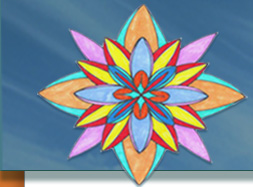During the last several months, I’ve had the honor of crossing the river from Portland, OR to Vancouver, WA to officiate at the weddings of same-sex couples from Oregon and other states, where such unions are not recognized. Most of the couples have been together for at least a decade; some are raising young children. I could feel the solidity of these relationships, most of which had been blessed years ago in both religious and community celebrations. And I could understand from personal experience the tension between their desire to participate in a legally binding ceremony that has been denied to them for years and the opportunity to gain access to privileges that straight couples have enjoyed for generations. Each ceremony I officiated, each license sent to the county clerk, felt like a step out of marginalization, a witness to all those who have worked for civil rights on so many different fronts.
Yet as one year draws to a close and another begins, I am moved by all the ways the civil rights movement seems to be losing ground. And in a recent Op-Ed piece in the New York Times, Timothy Egan put into words much of what I’ve been feeling in a piece called, Good Poor, Bad Poor.
“As the year ends, this argument is playing out in two of the most mean-spirited actions left on the table by the least-productive Congress in modern history. The House, refuge of the shrunken-heart caucus, has passed a measure to eliminate food aid for four million Americans, starting next year. Many who would remain on the old food stamp program may have to pass a drug test to get their groceries. At the same time, Congress has let unemployment benefits expire for 1.3 million people, beginning just a few days after Christmas.”
He gives examples of how these decisions reflect ‘the poor are morally inferior’ mindset. For instance at the same time Florida Republican Trey Radel supported tying eligibility for food stamps to drug tests, he was found guilty of possession of cocaine. And the congress that voted to cut off federal unemployment benefits have individual net worth more than one million dollars over the median income of US citizens. [Full Article]
While I am neither a politician nor a millionaire, I am still complicit in their actions. As I watch with horror the violence on other continents, I can forget that there are many forms of violence against person-hood occurring right down my street. Also in the New York Times last month was a five part series by Andrea Elliot, following the life of an 11 year old youngster in New York City living in a homeless shelter with her family. The story is so compelling I couldn’t stop reading it. It was an invitation in both word and picture of a lifestyle I cannot imagine anyone really living, or at least that’s what I tell myself. Perhaps I was so riveted to it because in my heart I know this generational poverty does exist. It is easy to say as sad as it is, I am powerless to change anything in the life of someone across the continent. But is that true? Can I say that I treat everyone whose path crosses mine as worthy of God’s love, and of my respect? Can I say that I live my life with the intent of possessing only what I need to live a safe and healthy life – with the intent of sharing the rest with those who do not share the privileges I have? And if I cannot answer yes to those simple questions, am I doing everything in my power to create a world where everyone has access to food, shelter and medical care?
To be intent on these kinds of commitments are New Year’s resolutions I do not really want to make. On the other hand, I wonder what it would feel like to say the words of Tiny Tim in the Christmas Carol with the intention of living them – ‘God bless us everyone’? May we respond to the promise of a new year with willingness to move toward such a world, as best we can.

